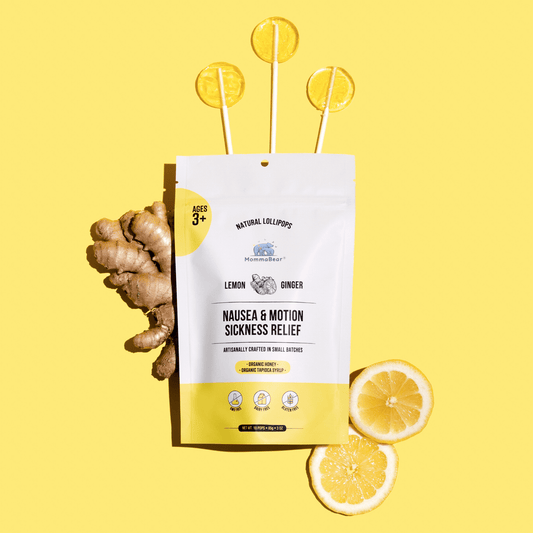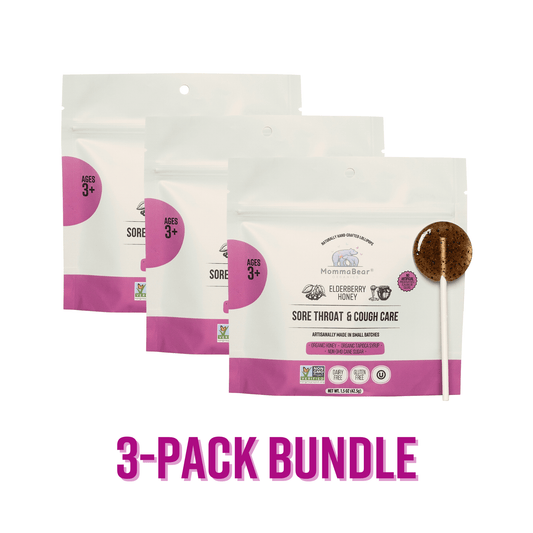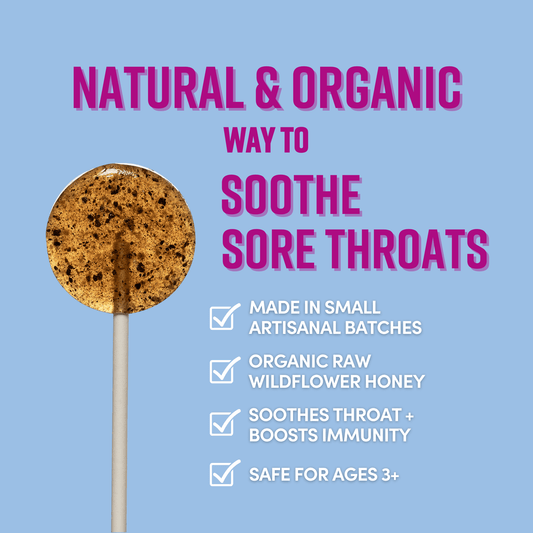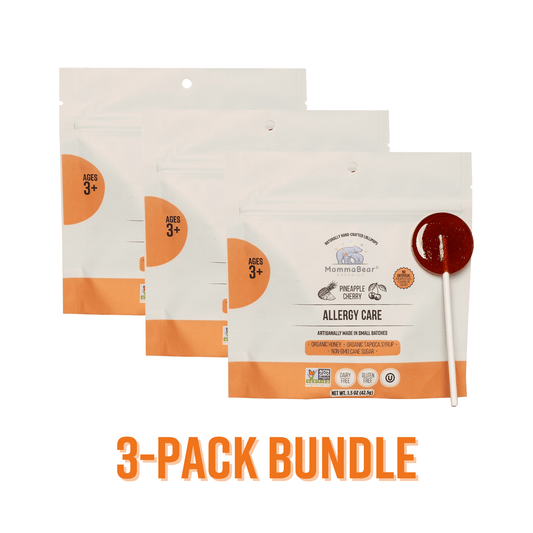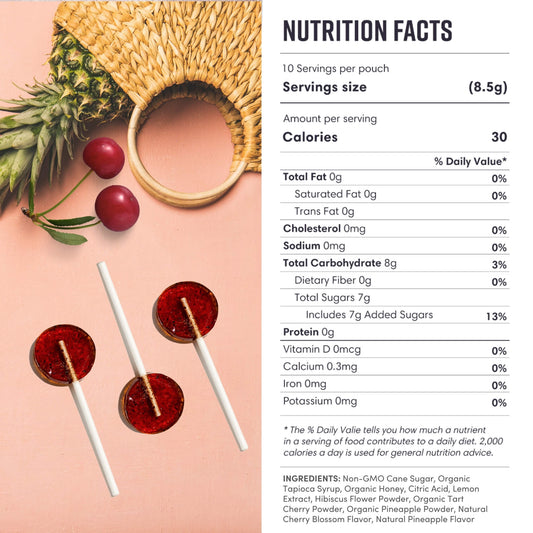It feels like people are really starting to care more about what's in their candy, you know? It's not just about whether it tastes good anymore. With this whole organic thing getting bigger, and people like me wanting to buy things that feel right, it seems like brands are finally having to think about where their stuff actually comes from. How it's made, what it's wrapped in. I've been trying to wrap my head around it all, and here’s what I’ve been learning:
-
Ethical Supply Chains: It really boils down to treating people fairly, sourcing ingredients in a way that doesn't wreck the planet, and actually knowing where everything comes from.
-
Certifications Matter: Labels like USDA Organic and Fair Trade aren't just for show. They're like a promise, a way to build trust.
-
Environmental Impact: Things like regenerative farming and using local suppliers can make a huge difference. And the packaging... don't even get me started on packaging.
-
Technology Helps: There are some cool digital tools now that help track everything, making sure everyone is staying honest.
I guess this whole shift isn't just because people are demanding it. It feels more like we're all figuring out how to make better products and take care of the people and the planet that make them possible. It’s starting to feel like the new normal, which is pretty great.
Ethical Supply Chain Management (3 Minutes)
How to Source Ethical and Sustainable Ingredients
Honestly, creating an ethical supply chain starts with the ingredients. It’s the very first step. It has to be. And it’s so much more than just slapping an "organic" label on something. It’s about digging in and really understanding the story behind every single thing you use. How was it grown? Who grew it? Were they treated well? At MommaBear Organics, when we look for something like our raw wildflower honey, we end up partnering with people who just get it—they care about the earth and they care about people. It's a feeling, you know?
So you have to set your own standards for every little thing—your sweeteners, your flavors, even that special honey. For me, it’s a hard line. No stuff that comes from tearing down forests, no exploiting people, and absolutely no nasty chemicals. Period.
Why Traceability and Transparency Matter
Traceability... it sounds so technical, but it’s really just about being able to follow an ingredient all the way back to its roots. It means you can stand behind your product because you know its story. Without that, how can you be sure you're sticking to your values? I mean, you really can't.
And people want to know. I’ve read that something like 62% of shoppers expect companies to be open about this stuff, like sustainability and how they treat their workers. It makes sense. We all want to feel good about what we buy. This is why brands are finally starting to use tracking systems for everything, from the farm to the shipping truck.
I stumbled upon this quote from a company called TraceX that really stuck with me: "Transparency is the backbone of ethical sourcing because it enables verifiable accountability... Transparency transforms ethical claims into auditable, credible action."
That's it, right there. It turns promises into proof. Digital tools are a big part of this. They can track locations, check documents, and flag problems like deforestation or unfair labor stuff almost instantly. Even for a small-batch company like ours, this tech helps us make sure we're holding ourselves to the same high standards as the big guys. You just can't hide shady practices anymore when everyone is watching.
Working Directly with Farmers
Going straight to the farmers is, hands down, one of the best things you can do. It just simplifies everything. When you cut out all the people in the middle, there are fewer places for things to go wrong, you know? Fewer chances for hidden labor issues or environmental shortcuts. Plus, you can be sure the farmers are getting paid what they deserve.
I love working with small-scale and local growers. They're often so passionate and use these amazing, sustainable farming methods. Building these relationships means we get better ingredients, but it's more than that. It feels like a real partnership. We support them, they support us. When you can actually go and see how your ingredients are grown, you just know in your gut that you're making a choice that helps a community, not hurts it.
It also means you can sometimes get custom ingredients and really support farming that heals the land, which is a huge part of our mission. When you mix that direct relationship with official certifications, you build a supply chain that you can really, truly be proud of.
Certifications and Standards for Ethical Sourcing
Okay, so third-party certifications can feel like a whole world of acronyms and labels. But they're actually super helpful. They're like a stamp of approval that tells your customers you're not just making stuff up.
This is how I usually remember them:
-
USDA Organic: This is the big one in the U.S. It means at least 95% of your ingredients are organic and you're following some really strict rules. They do inspections and everything, so you know it's legit.
-
Fair Trade: This one is all about the people. It makes sure farmers get paid fairly and have safe working conditions. So important for ingredients like sugar and cocoa.
-
Non-GMO Project Verified: A lot of people are worried about genetically modified ingredients, and I get it. I saw somewhere that 73% of people would pay more for products that are verified to be safe and sustainable, so this label really matters.
Then there are others, like Gluten-Free or Kosher, depending on who you're making your products for. Each one means more paperwork and audits, but it gives people peace of mind.
New certifications are always popping up, so you kind of have to stay on top of it. I've found that companies that go for multiple certifications seem to earn more trust. It just shows you're serious. This whole process of sourcing things the right way... it's the foundation for everything else that comes after.
Reducing Environmental Impact in Supply Chains
Thinking about the environmental side of things can feel... huge. Agriculture is this massive global industry, employing over a billion people and making something like $1.3 trillion worth of food every year. When you're a small organic candy company, it's easy to feel like a tiny drop in a very big bucket. But every choice we make adds up.
It’s not just about the ingredients themselves. It's how they're farmed, how they get to you... all of it leaves a footprint. I read a study by McKinsey once that said companies that really lean into sustainability can actually cut costs and see their value go up. So it's not just good for the planet; it's good for business. Let's dig into the farming part a bit more.
Sustainable Farming Methods for Ingredient Sourcing
The way food is grown has a massive impact on everything—the soil, the water, all the little critters. I've been learning a lot about regenerative agriculture, and it's such a hopeful idea. It’s not just about not using bad chemicals; it's about actively making the land healthier.
I saw this quote from General Mills that put it simply: "Regenerative agriculture is a holistic, principles-based approach to farming and ranching that delivers positive environmental, social and economic outcomes."
And it seems to work. Some trials have shown profits can go up by almost 200%. Organic farming is amazing, too. I read that organic dairy farming has a way lower impact on global warming and uses a lot less energy.
It's cool to see big companies like General Mills get on board. They're trying to switch a million acres of farmland to regenerative practices by 2030. That's a huge deal, especially since farming makes up almost half of their greenhouse gas footprint. When I'm looking for suppliers, I try to find people who are doing things like crop rotation and using natural ways to control pests. It just feels right.
Working with Local and Small-Scale Producers
Sourcing locally is one of those things that just makes so much sense. Less time in a truck means fewer emissions. It’s that simple. Transportation is a huge source of greenhouse gases, so partnering with local folks can really shrink your carbon footprint.
I read this line from Jillian Verbeurgt, who founded a company called GreenBytes, and it really resonated: "When you source your ingredients and supplies locally, you're making a choice that reduces your environmental footprint."
There are other good things about it, too. Small-scale farmers often use more sustainable methods, and you can just be more open with each other. I love being able to visit a farm and see things for myself. It helps me know for sure that we’re aligned. Plus, people are really starting to care about this. I saw a stat that 74% of high-income shoppers and 54% of lower-income shoppers think about a company's environmental impact before they buy.
Chipotle is a pretty cool example. They try to get their produce from farms within 350 miles of their restaurants. That helps cut down on shipping emissions and supports local farmers. To do this yourself, you just have to look around. Check out farmers' markets, local business groups, and see who's out there. Then you can build your sustainability goals right into your supplier agreements.
Choosing Eco-Friendly Ingredients
The actual ingredients you choose matter a ton. For our candy, that means really thinking about our sweeteners, our flavors, everything. Using raw wildflower honey, for instance, felt like a good choice because it supports sustainable beekeeping.
Generally, plant-based ingredients are easier on the planet. But if you do need animal products, like honey, it’s so important to find suppliers who are humane and sustainable.
And then there’s transportation. I saw this table once and it really put things in perspective for me.
Here’s what I keep in mind:
| Transportation Method | Miles per Gallon (per ton of cargo) | CO₂ Emissions (relative to barge) |
|---|---|---|
| Inland Barge | 514 miles | Baseline (lowest) |
| Rail Transport | 202 miles | 39% more than barge |
| Truck Transport | 59 miles | 371% more than barge |
It’s kind of shocking, right? Trucks are responsible for so much of our transportation emissions. So whenever possible, choosing suppliers who use trains or barges instead of trucks is a big win.
IKEA is doing some really smart stuff here. They're moving things from roads to rails and water, and they're pushing for electric vehicles. An electric truck can cut emissions by almost half compared to a regular one. You also have to think about packaging and any special handling ingredients might need. All these little decisions, when you put them together, can really start to make a difference.
sbb-itb-e1a023f
Using Ethical Manufacturing Practices
So, you've gone to all this trouble to find the best, most sustainable ingredients. That's awesome. But the job isn't done. The next step is making sure the way you actually make your product is just as ethical. It’s all connected. If you don't have ethical manufacturing, all that careful sourcing kind of loses its meaning. The two have to go together to create a supply chain you can feel good about.
Fair Labor Practices in Manufacturing
This is just fundamental. It's about treating people with respect. Exploiting workers is just wrong, full stop. The Fair Labor Association has this code that’s based on international standards. It covers the big things: no forced or child labor, letting workers unionize, no discrimination, and providing a safe place to work.
Here in the U.S., we have laws like the Fair Labor Standards Act for minimum wage and overtime, and OSHA for safety. If you don't follow these, you can get into a world of trouble. Fines, lawsuits... it's just not worth it.
To me, it’s about more than just following the rules. It’s about creating a good environment. We do regular checks, we train everyone on their rights, and we have a system where people can bring up issues without fear. For MommaBear Organics, making our small-batch lollipops means having a safe workplace and paying wages that let people live comfortably, not just scrape by.
Eco-Friendly Packaging Options
Packaging is such a tough one. It's the first thing your customer sees, and it’s a huge opportunity to show you care about the planet. People are so much more aware of waste now, and many are willing to pay a little more for packaging that's not going to sit in a landfill forever.
Good packaging should be a few things: recyclable or compostable, non-toxic, and made from renewable stuff. A simple design is usually better. I know these options can sometimes cost more or be harder to find, but the long-term benefits are just so clear. People are doing really cool things with bioplastics, edible packaging, and even stuff that dissolves in water. I remember hearing that the KitKat brand in Japan switched to paper packaging. How cool is that?
My advice is to just start somewhere. Look at what you're using now and see where you can improve. Talk to suppliers who focus on sustainable materials. And then test, test, test. You need to make sure it's safe and actually protects your product. Using recycled materials is also a great way to close the loop. Just be honest with your customers about it. Tell them how to dispose of it and what you're doing to be better. They'll appreciate it.
Waste Reduction and Recycling Programs
Being wasteful just feels bad, and it’s bad for business too. The first step is to figure out what you're throwing away. Is it packaging from ingredients? Messed-up products? Once you know, you can start to tackle it.
Simple things can make a big difference, like being more careful with batch sizes or improving quality control so you have fewer duds. It all works together with eco-friendly packaging. For recycling, you have to think about the waste you make and the packaging your customer ends up with. We try to use materials that are easy for people to recycle.
If you have extra products that are perfectly fine to eat but maybe don't look perfect, you can donate them. And food scraps or biodegradable packaging can be composted. The key to all of this is getting your team on board. Everyone needs to know how to sort waste properly and why it matters. Keeping track of your progress helps you see what's working and keeps you motivated. It’s all about trying to create a system where nothing gets wasted.
Maintaining Accountability and Continuous Improvement
Okay, so building an ethical supply chain isn't something you do once and then check off the list. It’s... ongoing. You have to keep paying attention and always be looking for ways to get better. Once you have your systems in place for fair labor, good packaging, and reducing waste, you need to have a way to make sure you're actually sticking to them. Accountability is everything. It’s how you build trust and stay flexible enough to deal with new challenges.
Regular Impact Reporting and Audits
Accountability really starts with taking a hard, honest look at what you’re doing. That means audits and reviews. You can do them yourself, but having an outside person or group take a look is also really helpful. It keeps you honest. For instance, in 2024, the USDA updated its rules for organic imports. They did it because a report found some holes in the system. Now they do surprise inspections on at least 5% of organic businesses every year to trace products back and make sure everything is legit.
The people who grant certifications are getting stricter, too. And honestly, digital tools have been a lifesaver. They make keeping records so much easier and audits way less painful. They don't just help you follow the rules; they give you real proof that you're doing what you say you're doing.
When you put together reports on your impact, you should include everything—where your ingredients came from, your certifications, how you're doing with labor practices, your environmental footprint, and what you’re doing to fix any problems you find. If you can, sharing these reports publicly is a great way to show you're serious and build trust.
Consumer Education and Transparency
Being open and honest is just so important. When your customers understand why you do things a certain way, they become your biggest supporters. And they'll help keep you accountable. It creates this amazing feedback loop that just pushes you to be better.
But it can't be just fluffy marketing talk. You have to use plain language on your packaging, on your website, everywhere. Explain your sourcing, how you make your products, and what you're doing for the environment. For MommaBear Organics, we talk about being certified organic, non-GMO, and all of that, but we also emphasize that we're a small-batch company making things right here in the USA. People seem to appreciate knowing exactly what they're supporting.
Sharing your audit results and impact reports, when you can, really drives it home. Telling the stories of your farmers, the challenges you’ve faced, and the progress you've made—that's what connects with people on a human level. It proves you're really trying.
Staying Current with New Sustainability Standards
The world of sustainability is always changing. New rules, new standards... it can be a lot to keep up with. You have to be proactive. The recent USDA changes are a perfect example of how quickly things can shift.
I try to subscribe to USDA updates and join sustainability forums to see what's coming. That way, you can make small changes over time instead of scrambling at the last minute. Training your team regularly and using digital tools helps everyone stay on the same page. Working with your suppliers is also key, so you’re all moving in the same direction.
They're starting to get rid of some of the exceptions in organic certification, which means more people along the supply chain will need to get certified. Even if it doesn't affect you right away, it's good to be prepared.
Technology really is a game-changer here. It lets you track ingredients in real time, automates a lot of the paperwork, and just makes it easier to communicate. These tools help you spot problems early, get through audits, and have the data to back up your claims.
It’s a constant process of reviewing, communicating, and holding yourself accountable. But that’s what makes your supply chain strong and, you know, good.
Key Takeaways for Ethical Supply Chains
When I think about it all, building an ethical supply chain for organic candy really means looking at every single corner of your business. From the seeds in the ground to the way you talk to your customers. At the center of it all is this idea of traceability and transparency. Knowing where things come from.
Certifications are a huge piece of the puzzle. Being organic means you have to follow so many rules—no GMOs, no synthetic fertilizers. It forces you to keep detailed records and have verified procedures, which is what builds trust with everyone.
But setting it all up is just the start. You have to keep improving, keep holding yourself accountable. That means regular audits, honest reports, and staying on top of new regulations. The USDA, for instance, is always tightening the rules to prevent fraud, which is a good thing for everyone who is trying to do it right.
Using platforms to track where ingredients come from has made my life so much easier. It simplifies audits and gives customers the transparency they're looking for. I think small-batch producers like us can really lead by example here.
Take MommaBear Organics. We've tried to show that you can make handcrafted, organic, non-GMO goodies that families love, while being completely open about how we do it. It shows that being ethical is a direct part of making a high-quality product.
When you're honest about your sourcing and how you make things, your customers become your advocates. It creates this cycle of trust and feedback that just makes your brand stronger.
Honestly, prioritizing this stuff is about more than just staying out of trouble. It builds trust, creates loyal customers, opens up new markets, and just feels like the right thing to do for people and the planet. In a world where everyone wants transparency, doing things ethically is what will make you stand out.
To know if you're succeeding, you have to look at the numbers—what percentage of your ingredients are certified, what your audit results are, if your carbon footprint is going down, and what your customers are saying. This data shows you where you're at and where you need to get better. It’s all part of building a business that can grow sustainably.
FAQs
What certifications should I look for in ethical and organic candy products?
When you're trying to pick out a good organic candy, those little labels can really help. The one I always look for first is USDA Organic. It's a big deal because it means no synthetic fertilizers, pesticides, or GMOs were used. Another one that’s super important is Fairtrade. That one tells you that the farmers who grew the ingredients were paid fairly and work in good conditions.
You might also see a B Corporation certification, which is for companies that are really committed to doing social and environmental good. And if there's any fabric in the packaging, a GOTS (Global Organic Textile Standard) label is a good sign. They're all just little clues that you're choosing a brand that really cares.
How can digital tools improve transparency and traceability in organic candy supply chains?
Digital tools are kind of amazing for this. Things like blockchain and other traceability systems are changing the game. They let you track ingredients from the moment they're harvested all the way to the final product, in real time.
So, everyone involved can see the whole journey of an ingredient—from the farm to the candy wrapper. It helps make sure the certifications are real and that everyone is following the rules. I think it's the key to building real trust with customers, so they can feel confident about the candy they're eating.
How can small-batch producers create ethical and sustainable supply chains in the organic candy industry?
For small-batch producers like us, it really comes down to being intentional. A great place to start is by working directly with fair trade suppliers or local farmers. People who you know are committed to ethical labor and sustainable farming. It means you get amazing ingredients, and you're also supporting local communities.
Then, in your own production, you can focus on being mindful. Trying to cut down on waste, save energy, and just avoid harmful practices. Choosing organic, non-GMO ingredients is a huge part of that. It all adds up to building a supply chain that you can feel really good about, one that's good for people and the planet.
It feels like a lot sometimes, trying to get everything right. There are so many moving parts, and just when you think you've figured one thing out, something else changes. But then I think about why I started this in the first place—to make something good, something I could feel proud of giving to my own family. And that makes it all worth it. It’s not about being perfect, I guess. It’s just about trying to be a little bit better, every single day.
Related posts
- Top 7 Herbs for Stress Relief in Candy Form
- How to Choose Allergy-Free Candy for Your Family
- Ultimate Guide to Ethical Ingredient Sourcing
- Best Organic Candies for Relaxation in 2025



